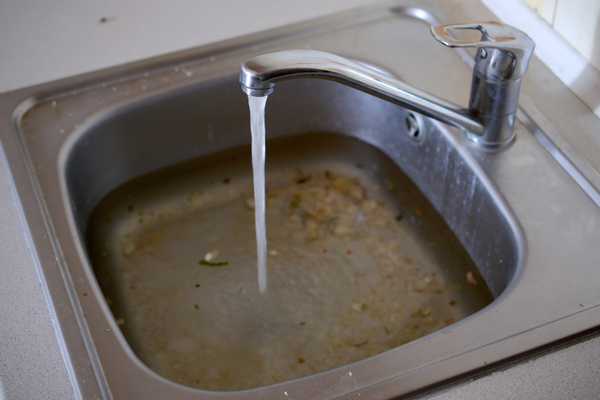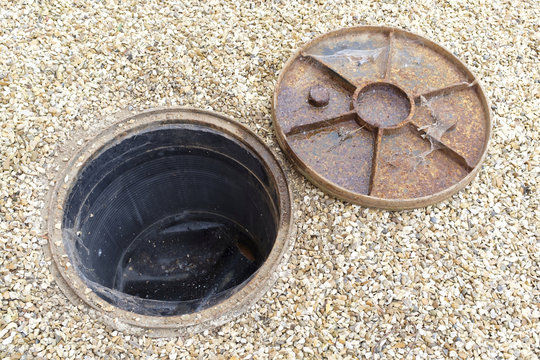How do you feel in relation to How to handle a clogged drain in your home?

Intro
Handling a blocked drain can be a frustrating experience, interfering with everyday tasks and potentially causing damage to your home. Nevertheless, before reaching out to pipes professionals, there are actions you can require to address the problem yourself. In this overview, we'll check out do it yourself options and safety nets to take on a blocked drainpipe successfully.
Recognizing the Problem
The very first step in addressing a blocked drainpipe is identifying the indicators. Slow-moving water drainage, gurgling noises, foul odors rising from drains pipes, or water support up are common indicators of a blocked drainpipe. Recognizing these indicators early can assist avoid better problems.
Selecting the Right Pipes Solution
When selecting a plumbing solution, take into consideration variables such as experience, licensing, and consumer testimonials. Pick a credible plumber with a record of top quality handiwork and clear prices methods.
Price Factors to consider
The price of specialist drain cleaning services can vary depending upon the extent of the clog and the plumber's prices. Demand quotes from multiple companies and inquire about any surcharges to make certain openness and stay clear of shocks.
Security Measures
When attempting do it yourself drainpipe cleaning, prioritize security. Put on safety gloves and eyeglasses to prevent contact with harmful chemicals or germs. Never ever blend various drain cleaning items, as this can produce harmful fumes.
Instance Researches
Real-life examples highlight the effectiveness of DIY solutions and the significance of prompt expert intervention in fixing drain blockages.
Typical Sources Of Blocked Drains
Recognizing the aspects that contribute to drain obstructions is vital for effective resolution. Typical wrongdoers include hair, soap scum, oil, food debris, and foreign objects like hygienic products or paper towels. Tree origins getting into below ground pipelines can also trigger considerable blockages.
Do it yourself Solutions
For minor obstructions, several DIY options can be effective. Putting boiling thin down the drain can aid liquify grease and particles. Baking soda and vinegar or a blend of salt and baking soft drink can serve as natural cleansers. Using a bettor or plumbing serpent to dislodge obstructions is one more choice.
Tools and Equipment
Having the right tools on hand can make do it yourself drain cleansing extra effective. A bettor is a flexible device for removing clogs in sinks, commodes, and showers. A pipes serpent or auger can reach deeper obstructions, while drainpipe cleaning chemicals can be utilized cautiously for persistent clogs.
Preventive Measures
To prevent future blockages, embracing preventive measures is critical. Install drain guards or strainers to capture hair and debris before they get in the pipes. Consistently flush drains pipes with warm water to dissolve oil accumulation, and prevent dealing with grease or strong waste down the drain.
When to Call a Professional
While DIY solutions can solve minor clogs, particular signs suggest the need for expert aid. Relentless blockages, foul odors in spite of cleaning up efforts, or numerous drains supporting all at once are warnings that call for professional intervention.
Conclusion
By adhering to the tips described in this guide, you can properly tackle blocked drains and stop future pipes concerns. Whether selecting DIY solutions or looking for specialist assistance, timely activity is key to maintaining a healthy plumbing system and protecting the stability of your home.
How to Clear a Clogged Drain Yourself (And When to Call In the Professionals)
What Can Clog a Drain
Dirt Skin flakes Hair Grease Soap scum Food Offset pipes Tree roots Small objects Mineral buildup DIY Tricks to Unclog a Drain
You can fix this! Once you have identified the source of the clog (or have a vague idea), you can try one or a combination of these fixes in order to clear your plumbing.
Wire Hanger or Snake
Untangle and clear out hair from a drainpipe with a homemade snake. Use a straightened-out wire hanger with a 90-degree angle hook to locate the clog and drag out any unwanted material.
Remember not to push the clog further down to where the wire hanger cannot reach! If you need to follow up with a plunger, give it a try. Your efforts might be more successful after it’s been wire-snaked.
If you want to get fancy and don’t have a wire hanger to spare, head to the store and pick up a hand-operated drain snake. You can get one for $10-$30. It may save you the hassle, and provide additional length to reach deep into the clogged pipe.
Plunger
A cup plunger has a suction cup attached to a wooden handle. The rubber creates a seal around the drain, and increases the pressure force of the plunger.
Plunge for 30-second increments to loosen the clog. This may need to be repeated over the course of 15-20 minutes. Once plunged, run the water to flush the remaining material out of the drain.
Remember– never use a plunger if you have used a chemical drain cleaner. These chemicals can splash up from the force of the plunger and cause serious injury or burns.
Boiling Water
Hot water can sometimes break up materials into a flushable amount. Dirt, grease, and soap buildup requires heat in order to unstick from surfaces.
Take your kitchen kettle and heat your water to a boil. Once it reaches a rolling boil, pour it directly down the drain into the blockage. Carefully follow with plunging, if necessary.
Don’t worry if this takes more than one try! It can often take multiple kettles and repeated plunging in order to clear a particularly stubborn clog.
Chemical Drain Cleaner
As a last resort, pick up a bottle of chemical drain cleaner. Drain-cleaning chemicals are potent, and not very good for the environment.
You may need to wear protective eyewear in gloves before handling your bottle of chemical drain cleaner. Follow the instructions printed on the bottle, and flush with water as soon as the instructions allow. Do not follow with plunging.
Baking Soda and Vinegar
As a safer alternative to chemical drain cleaner, baking soda and vinegar can create a chemical reaction that clears tough clogs.
Combine one cup of cleaning vinegar with one cup of boiling water, and set aside. Once you have done this, pour half a cup of baking soda down the drain. Give the baking thirty seconds to settle and cover a large portion of the problem drain.
Following the baking soda, pour down your vinegar and hot water solution. Once the vinegar and baking soda combine, the mixture will bubble and fix. Let this reaction fizzle in the drain for about an hour.
After an hour, follow with a kettle’s worth of hot water. The heat and liquid should flush out any remaining material.
When to Call a Plumber
If your DIY attempts haven’t cleared your clog drain, it’s time to call in a professional. It’s not worth losing access to your kitchen sink or high-traffic bathroom. A clog in a vital area can keep you from the things you’d rather be doing, and derail your routine.
Anytime a clog is causing water to spread is a time to call in a plumbing service. What starts out as a little bit of water can quickly grow into serious, expensive water damage.
Additionally, a serious clog can result in burst pipes or serious leaks. Make sure you know when to take it seriously!
https://myguysnow.com/how-to-clear-a-clogged-drain-yourself-and-when-to-call-in-the-professionals/

We had been made aware of that report about Some easy tips to fix blocked drains from a buddy on a different website. In case you liked our blog post kindly remember to pass it around. We recognize the value of your readership.
Book-Now